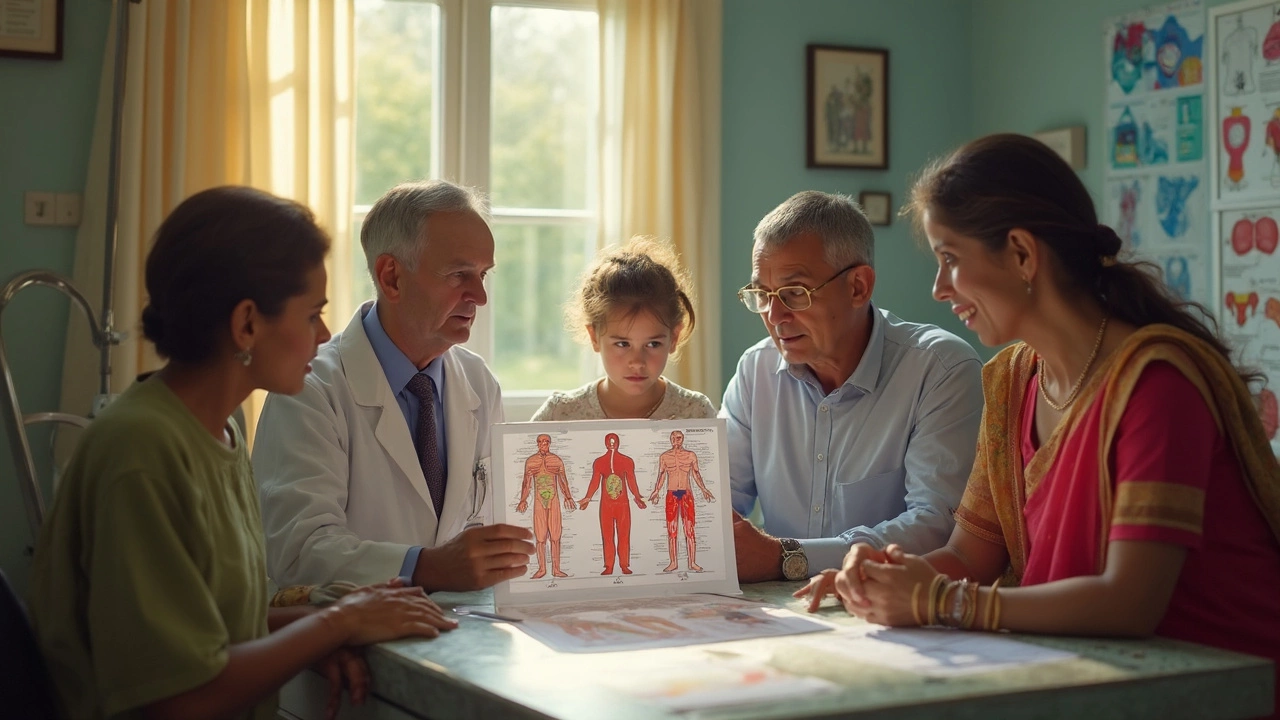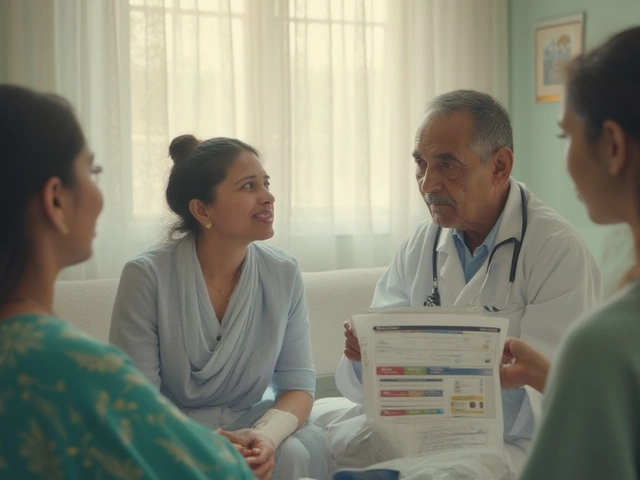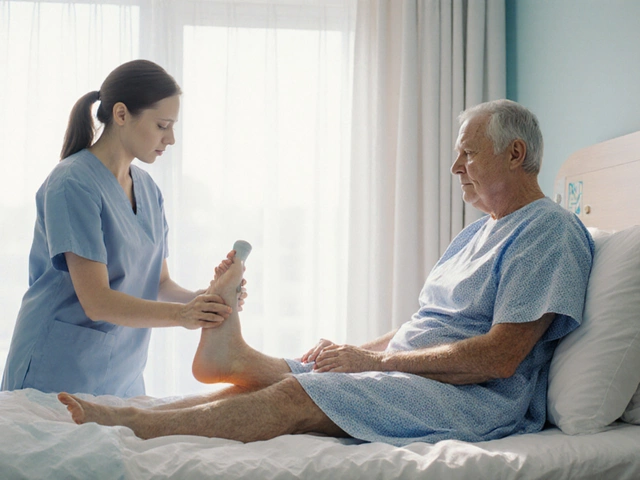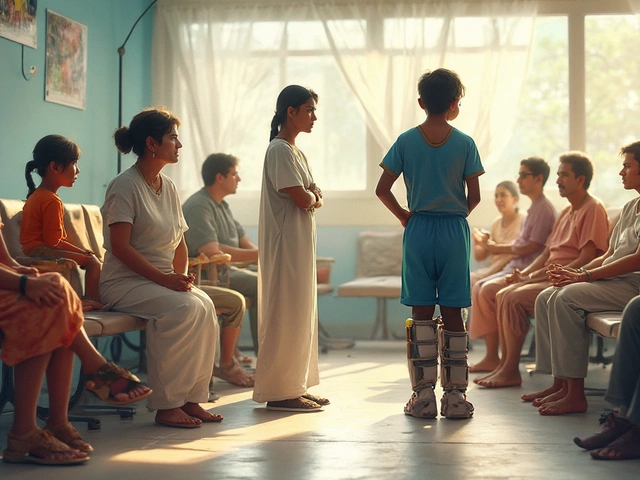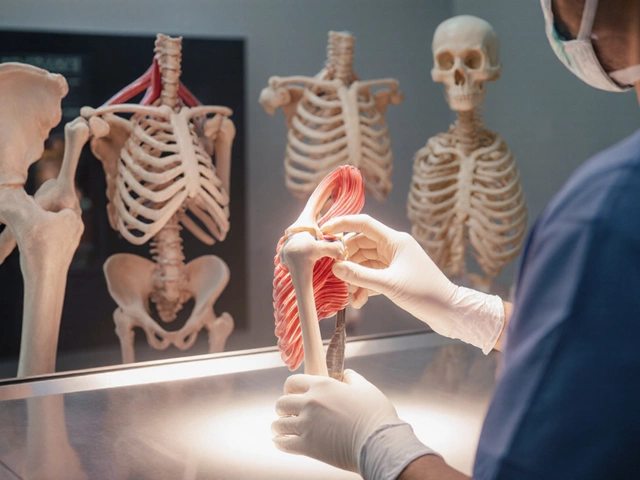Getting told you or someone you love is at stage 3 or stage 4 cancer hits hard. But what do those stages even mean, and how much of a difference is there? Most folks know higher numbers mean things are more serious, but the real details often sound wrapped in mystery—and sometimes, fear.
Doctors use stages to describe how far cancer has spread. The jump from stage 3 to stage 4 is actually a big deal: stage 3 usually means cancer has grown or spread to nearby areas, while stage 4 means it has moved even further—to distant organs, like the liver, lungs, or brain. This isn’t just doctor talk. How far cancer has spread changes the whole game: the type of treatment, the way your body feels, and, yes, the long-term odds.
But don’t just get stuck on the numbers. Knowing what stage you’re facing helps you ask the right questions, plan next steps, and focus on what you can control right now. The goal? Turn the medical mystery into something you and your family can face with real info, not just worry.
- What Do Cancer Stages Really Mean?
- How Stage 3 and Stage 4 Differ
- Why Stage 4 Is Usually Harder
- What Treatment Looks Like at Each Stage
- Talking to Your Doc: Must-Ask Questions
- Coping When Things Get Tough
What Do Cancer Stages Really Mean?
If you’ve ever wondered what your doctor means by stage 1, stage 2, or any other stage of cancer, it’s basically a way of showing how far the disease has spread. The stages help everyone on your medical team stay on the same page and guide decisions about treatment and what comes next.
Let’s break it down:
- Stage 1: Cancer is small and only in one place. Think of this as the early days—it hasn’t moved far.
- Stage 2: Cancer has grown but is still restricted to its original area or a bit beyond. It could be getting bigger or pressing on nearby tissue.
- Stage 3: Now, the cancer has spread to the nearby lymph nodes or tissues. This usually means it’s getting more aggressive and needs stronger treatment.
- Stage 4: This is when cancer has traveled away from where it started and set up shop in other parts of the body, like the lungs or liver. Doctors call this metastatic cancer.
The most important thing to know: stage 3 and stage 4 mean more advanced cancer, but they’re not the same.
| Stage | Main Features |
|---|---|
| 1 | Localized, small, no spread |
| 2 | Bigger tumor, may be close to nearby tissue |
| 3 | Spread to nearby lymph nodes or structures |
| 4 | Spread to distant organs (metastasis) |
Doctors also use a system called TNM—short for Tumor, Node, Metastasis. It tells you the size of the tumor, if it’s in any lymph nodes, and if it’s spread anywhere else. For example, T2N1M0 means a moderate-sized tumor, cancer in nearby nodes, but not in other organs.
Getting a stage number isn’t about putting a label on you—it’s about getting a clearer picture, so you and your care team can make the best choices together. It also helps when you’re looking up information or hearing about new treatments.
How Stage 3 and Stage 4 Differ
If you’re wondering how stage 3 and stage 4 cancer compare, it comes down to one big thing: spread. Stage 3 means the cancer is pretty serious—it’s gotten bigger or has reached nearby lymph nodes, but it hasn’t jumped far from where it started. Stage 4, though, means cancer has packed its bags and traveled to different, sometimes far-off parts of your body. This is called metastasis.
Here’s how these differences shake out in everyday life and treatment:
- Stage 3: Cancer has grown a lot, may be pressing on nearby tissues or has hit nearby lymph nodes, but it sticks to the same neighborhood.
- Stage 4: Cancer has moved out, landing in distant organs—like the liver, lungs, or bones. You might hear docs call this “metastatic” cancer.
This spread makes a huge impact on what doctors can do. Stage 3 treatments still often involve aiming for a cure—think surgery, radiation, or strong medicine. At stage 4, it’s more about controlling the cancer, shrinking it if possible, and focusing on quality of life.
Here’s a table that sums up the differences:
| Stage | Where's the Cancer? | Main Treatment Goal | Chance to Cure |
|---|---|---|---|
| Stage 3 | Grown locally, maybe in nearby nodes | Remove or destroy all cancer | Still possible, depending on type |
| Stage 4 | Spread to distant organs | Control cancer, ease symptoms | Unlikely, but can live longer with treatment |
One common question people ask: does moving from stage 3 to stage 4 happen overnight? Not really. For most cancers, this change can take months or even years, depending on how aggressive it is, and sometimes, even the best scans can miss tiny cancer spots until they grow bigger.
To sum up—it’s all about how far the cancer’s traveled. The more it spreads, the tougher it gets for doctors to chase it down with treatments. That’s why catching cancer at stage 3 instead of 4 can mean more options and better odds.
Why Stage 4 Is Usually Harder
The jump from stage 3 to stage 4 cancer isn’t just about a new number—it changes everything. At stage 4, cancer has moved way beyond where it started. It’s often spread to organs far from the original spot. Think of breast cancer traveling to the lungs, or colon cancer showing up in the liver. This spread is called metastasis, and it makes things way more complicated.
Why does this matter so much? Here’s the deal: Doctors can still sometimes remove the main tumor at stage 3, or blast it with targeted treatments. At stage 4, it’s almost never just one area—they have to treat the whole body. That usually means more chemo, more side effects, and a mix of treatments instead of just surgery or local therapies.
The numbers are pretty clear, too. Five-year survival rates drop sharply when cancer shows up in other organs. Check out this comparison for some common cancers:
| Cancer Type | Stage 3, Five-Year Survival | Stage 4, Five-Year Survival |
|---|---|---|
| Breast | ~72% | ~29% |
| Colon | ~71% | ~15% |
| Lung | ~36% | ~8% |
Here’s what makes stage 4 especially tough:
- It’s usually not curable: Most times, doctors talk about managing cancer, not beating it for good.
- Treatments get more intense: People often need multiple kinds of medicine or therapy all at once. Side effects can pile up.
- Symptoms can shift fast: When cancer’s in more places, it can cause pain, tiredness, or other problems throughout the body.
- The emotional side hits hard: Coping with a stage 4 diagnosis feels different. Patients and families often need more support, too.
Still, it’s not all doom and gloom. There are real advances—immunotherapy and targeted drugs can give some folks more good months or even years. But the truth is, stage 4 throws a lot more obstacles in the way than stage 3 ever does. Knowing this helps you gear up and talk honestly with your doctors about what really matters most.

What Treatment Looks Like at Each Stage
Treatment for stage 3 and stage 4 cancer isn’t a one-size-fits-all deal. Each stage brings its own set of options, worries, and even hope. Understanding the differences can really help when you’re sitting in the doctor’s office, overwhelmed by the choices.
For stage 3 cancer, doctors usually go for a combo approach. This means you might get surgery to remove as much of the tumor as possible, followed by radiation or chemotherapy to kill any sneaky cancer cells that might be left. If the cancer’s in a place like the breast or colon, they’ll often do surgery first, then use chemo or targeted drugs afterward to lower the chance of it popping back up. Some newer treatments, like immunotherapy, are sometimes added if the cancer is stubborn or there’s a high risk of it coming back.
Stage 4 is a different ballgame. Here, the cancer has traveled farther away from where it started. That usually takes surgery off the table (unless it’s just to help with pain or symptoms). Now, the doctor’s goal shifts to controlling the cancer for as long as possible and keeping you feeling as good as possible. Chemo, immunotherapy, hormone therapy, or targeted drugs become the main tools. And, since the focus is more on quality rather than cure, supportive (palliative) care is often added in—helping with pain, energy, or appetite.
Take a look at this quick breakdown of common differences in treatment:
| Stage | Main Treatments | Goals | % Getting Surgery |
|---|---|---|---|
| Stage 3 | Surgery, Chemotherapy, Radiation, Targeted Therapy | Remove cancer, prevent return | 60-80% |
| Stage 4 | Chemotherapy, Immunotherapy, Targeted Therapy, Palliative Care | Control cancer, improve quality of life | Under 20% |
Here’s what helps folks at each stage get the best care:
- Get a second opinion—especially if you’re not sure about the plan or feel like more options might exist.
- Ask about side effects before starting any treatment; you want to know what’s coming so you can plan ahead.
- For stage 4, see if there’s a clinical trial you could join. Many new drugs are tested this way before they hit the market.
- Keep track of how you feel and tell your team—sometimes little tweaks make a big difference in comfort.
No two people walk this path the same way, but knowing how treatment shifts from stage 3 to stage 4 gives a real sense of what to expect, and makes those scary choices feel just a bit more manageable.
Talking to Your Doc: Must-Ask Questions
Walking into the doctor’s office after hearing “stage 3” or “stage 4” cancer can feel like you’re in somebody else’s bad dream. Your brain fogs up. That’s why showing up with questions makes a huge difference. Not only does it help you get a grip on what you’re dealing with, but it keeps you closer to solid ground. Here’s what you want to put on your checklist before every appointment.
- What exactly does my stage mean? (Ask what makes your case stage 3 or stage 4—it can be confusing because different cancers get staged in slightly different ways.)
- Can you explain what the treatment goals are at this stage?
- Are we aiming to cure, control, or just ease symptoms?
- What are my treatment options and what’s your honest take on each one? Any clinical trials?
- What side effects should I expect and how bad can they get?
- How will treatment affect my day-to-day life, especially with work, eating, or spending time with family?
- If I don’t feel good about a decision, do I have time to think or get a second opinion?
- Can we talk numbers—what are the real odds of the cancer shrinking, staying put, or coming back?
- What do I need to watch for between now and my next visit? When should I call you?
These questions help your doctor walk you through the facts, instead of just tossing medical words around. If you forget to ask, write them down, hand the list over, or even ask a family member to come and scribble notes. No question is too small.
When we’re talking about stage 4 cases especially, it’s useful to ask for numbers. Here’s a basic table a lot of doctors rely on, which breaks down the five-year survival rates for some common cancers, based on the stage at diagnosis. Keep in mind, your individual outlook will depend on lots of stuff—like age, overall health, and which organs are involved.
| Cancer Type | Stage 3 Five-Year Survival (%) | Stage 4 Five-Year Survival (%) |
|---|---|---|
| Breast | 72 | 28 |
| Colorectal | 71 | 15 |
| Lung (non-small cell) | 36 | 8 |
| Prostate | 100 | 32 |
Having these tough conversations isn’t easy, but the more details you have, the less powerless you feel. Don’t leave the office without making sure you understand your plan and have at least one way to get in touch if you wake up in the middle of the night worried about something. Your mental peace matters, too.
Coping When Things Get Tough
Hearing stage 3 or stage 4 cancer shakes everything up. It’s more than just physical—your head and heart get hit too. Here’s the truth: feeling lost, angry, or massively overwhelmed is normal. You don’t have to hide it, and you’re definitely not alone.
Let’s talk about real, practical ways to handle things when the going gets rough. First, support makes all the difference. Studies have shown that people facing stage 3 or stage 4 cancer do better emotionally when they’re open with friends, family, or support groups. Even just telling a friend how you feel lifts some weight off. If you’re not much of a talker, some folks write in journals or find online groups where everyone “gets it.”
Next up, stay on top of everyday routines. Cancer can make everything seem out of control, so small habits—like eating at normal times, light exercise when possible, or even sticking to your typical shows—help bring a sense of normal back. Don’t brush off normalcy; it’s powerful.
Doctors and nurses aren’t just for checkups. If the anxiety or sadness gets too much, talk to them. They can recommend a counselor or therapist, many of whom are trained for people dealing with tough illnesses. It isn’t a sign of weakness to ask. If sleep takes a hit or appetite vanishes, your care team can help with those things too.
It’s also smart to ask questions about what you can control—things like side effects, bills, rides to treatment, or how to talk to your kids about what’s going on. Worry is a lot harder to fight when you’re left guessing. When my son, Ishan, had questions, being honest (even if it was hard) always felt better for both of us than tiptoeing around. Kids know when something’s up, so simpler explanations usually go further than silence.
Last tip: celebrate tiny wins. Maybe a walk outside goes well. Maybe the scan shows something good. Even on harsh days, there’s usually one thing you did right—don’t gloss over it.
